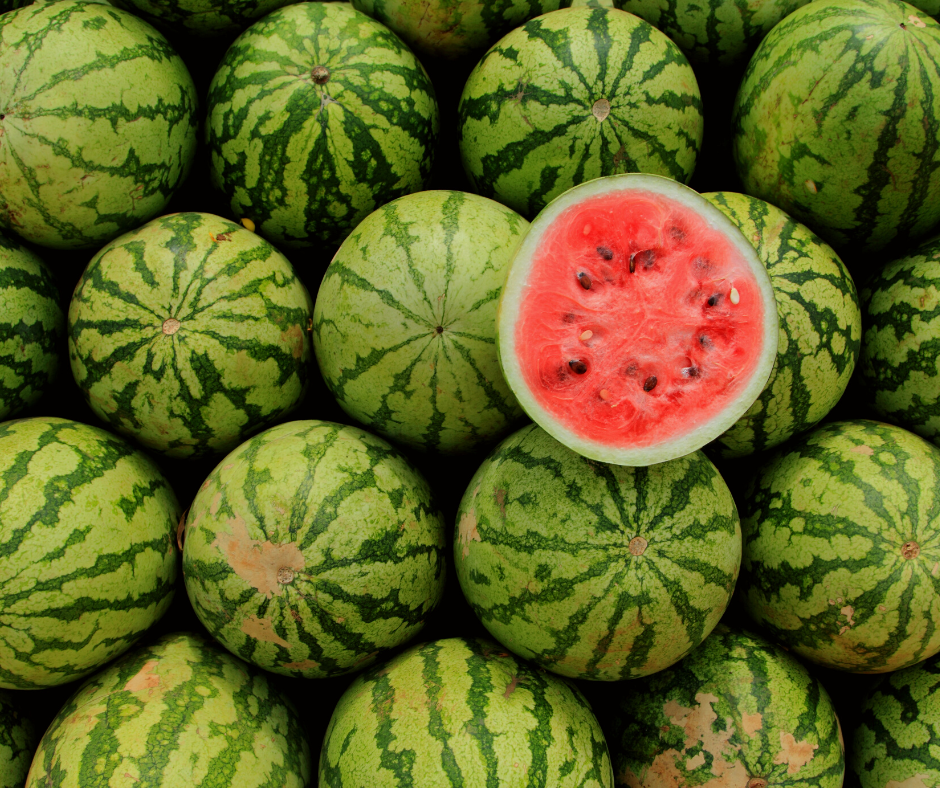How to Pick the Best Watermelon
go.ncsu.edu/readext?877489
en Español / em Português
El inglés es el idioma de control de esta página. En la medida en que haya algún conflicto entre la traducción al inglés y la traducción, el inglés prevalece.
Al hacer clic en el enlace de traducción se activa un servicio de traducción gratuito para convertir la página al español. Al igual que con cualquier traducción por Internet, la conversión no es sensible al contexto y puede que no traduzca el texto en su significado original. NC State Extension no garantiza la exactitud del texto traducido. Por favor, tenga en cuenta que algunas aplicaciones y/o servicios pueden no funcionar como se espera cuando se traducen.
Português
Inglês é o idioma de controle desta página. Na medida que haja algum conflito entre o texto original em Inglês e a tradução, o Inglês prevalece.
Ao clicar no link de tradução, um serviço gratuito de tradução será ativado para converter a página para o Português. Como em qualquer tradução pela internet, a conversão não é sensivel ao contexto e pode não ocorrer a tradução para o significado orginal. O serviço de Extensão da Carolina do Norte (NC State Extension) não garante a exatidão do texto traduzido. Por favor, observe que algumas funções ou serviços podem não funcionar como esperado após a tradução.
English
English is the controlling language of this page. To the extent there is any conflict between the English text and the translation, English controls.
Clicking on the translation link activates a free translation service to convert the page to Spanish. As with any Internet translation, the conversion is not context-sensitive and may not translate the text to its original meaning. NC State Extension does not guarantee the accuracy of the translated text. Please note that some applications and/or services may not function as expected when translated.
Collapse ▲ Watermelon is a healthy snack and a summer staple, so it is important that you know what to look for whether you are shopping at the local farmers market or at the grocery store. Many people may make their selection based on seeded or seedless and size. Ripeness requires that you look closely and hold the watermelon to determine the best one. Here are some tips Texas A & M University Extension that will help you pick the best watermelon:
Watermelon is a healthy snack and a summer staple, so it is important that you know what to look for whether you are shopping at the local farmers market or at the grocery store. Many people may make their selection based on seeded or seedless and size. Ripeness requires that you look closely and hold the watermelon to determine the best one. Here are some tips Texas A & M University Extension that will help you pick the best watermelon:
Tip 1: Find the yellow belly, or the field spot – Other than cutting open a watermelon to see the inside, the field spot is perhaps the best indicator of the ripeness. This spot on a melon shows where it was laying on the ground while attached to the vine. If the watermelon is ripe, the field spot should be a large, yellowish patch on one side of the melon. If it is ripe, the color should be a creamy, almost butter-like yellow. The bigger the yellow belly and the creamier the color means the more time the melon spent ripening on the vine. However, if the spot is smaller or looks more white than yellow, then the melon may not be as ripe.
Tip 2: Tap the underbelly and listen for a deep sound – Lightly knock the outside with your knuckles. A ripe melon will have a deeper sound, as opposed to an over-ripe one that will have a more hollow or flat sound. A duller, more hollow sound can mean the flesh is starting to go soft and spoil.
Tip 3: Look for a dull and heavy watermelon – Although it may not be the most photogenic nor the easiest to carry to your car, the best watermelons will be dull in appearance and heavier than the rest. A shiny melon indicates the insides are underripe. The best melon will most likely be heavier than the rest. On average, a watermelon is 92% water, which makes them so juicy. A heavier melon likely holds more water, which will make it juicier.




